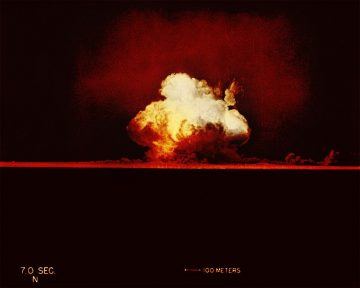Meera Subramanian in Nature:
 Crawford Lake is so small it takes just 10 minutes to stroll all the way around its shore. But beneath its surface, this pond in southern Ontario in Canada hides something special that is attracting attention from scientists around the globe. They are in search of a distinctive marker buried deep in the mud — a signal designating the moment when humans achieved such power that they started irreversibly transforming the planet. The mud layers in this lake could be ground zero for the Anthropocene — a potential new epoch of geological time.
Crawford Lake is so small it takes just 10 minutes to stroll all the way around its shore. But beneath its surface, this pond in southern Ontario in Canada hides something special that is attracting attention from scientists around the globe. They are in search of a distinctive marker buried deep in the mud — a signal designating the moment when humans achieved such power that they started irreversibly transforming the planet. The mud layers in this lake could be ground zero for the Anthropocene — a potential new epoch of geological time.
This lake is unusually deep for its size so its waters never fully mix, which leaves its bottom undisturbed by burrowing worms or currents. Layers of sediment accumulate like tree rings, creating an archive reaching back nearly 1,000 years. In high fidelity, it has captured evidence of the Iroquois people, who cultivated maize (corn) along the lake’s banks at least 750 years ago, and then of the European settlers, who began farming and chopping down trees more than five centuries later. Now, scientists are looking for much more recent, and significant, signs of upheaval tied to humans. Core samples taken from the lake bottom “should translate into a razor-sharp signal”, says Francine McCarthy, a micropalaeontologist at nearby Brock University in St Catherines, Ontario, “and not one blurred by clams mushing it about.” McCarthy has been studying the lake since the 1980s, but she is looking at it now from a radical new perspective.
Crawford Lake is one of ten sites around the globe that researchers are studying as potential markers for the start of the Anthropocene, an as-yet-unofficial designation that is being considered for inclusion in the geological time scale.
More here.
